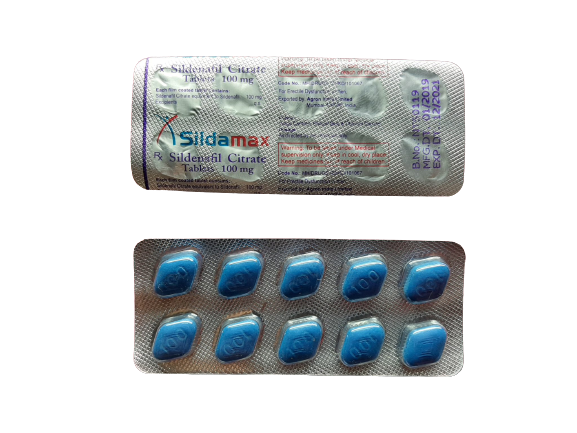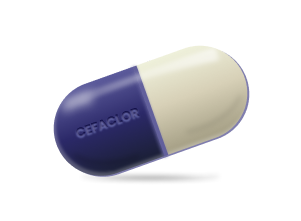
Cefaclor is a medicine used to treat the symptoms of various bacterial infections such as Bronchitis, Pharyngitis and Tonsillitis, Urinary Tract Infection, Ear Infections (Otitis Media) and Lower Respiratory Tract Infections. Cefaclor may be used alone or with other medications.


Cefaclor
| Package | pill | Total price | Save | Order |
|---|---|---|---|---|
| 500mg × 10 Pills | $15.42 | $154.15 | - | Add to cart |
| 500mg × 20 Pills | $14.97 | $299.48 Free Trackable Delivery | $9.00 | Add to cart |
| 500mg × 30 Pills | $14.83 | $444.83 Free Trackable Delivery | $17.70 | Add to cart |
| 500mg × 40 Pills | $14.75 | $590.17 Free Trackable Delivery | $26.80 | Add to cart |
| 500mg × 50 Pills | $14.71 | $735.52 Free Trackable Delivery | $35.50 | Add to cart |
| Package | pill | Total price | Save | Order |
|---|---|---|---|---|
| 250mg × 10 Pills | $8.24 | $82.36 | - | Add to cart |
| 250mg × 20 Pills | $7.80 | $155.92 | $8.80 | Add to cart |
| 250mg × 30 Pills | $7.65 | $229.46 Free Trackable Delivery | $17.70 | Add to cart |
| 250mg × 40 Pills | $7.58 | $303.02 Free Trackable Delivery | $26.40 | Add to cart |
| 250mg × 50 Pills | $7.53 | $376.56 Free Trackable Delivery | $35.50 | Add to cart |
Your order will be packed safely and securely and dispatched within 24 hours. This is exactly how your parcel will look like (pictures of a real shipping item). It has the size and the look of a regular private letter (9.4x4.3x0.3 inches or 24x11x0.7cm), and it does not disclose its contents



Cefaclor belongs to a class of drugs called Cephalosporins, 2nd Generation.
It is not known if Cefaclor is safe and effective in children younger than 1 month of age.
Drug uses
Cefaclor is indicated in the treatment of the following infections when caused by susceptible strains of the designated microorganisms:
Otitis media caused by Streptococcus pneumoniae, Haemophilus influenzae, staphylococci, and Streptococcus pyogenes
Note: β-lactamase-negative, ampicillin-resistant (BLNAR) strains of Haemophilus influenzae should be considered resistant to cefaclor despite apparent in vitro susceptibility of some BLNAR strains.
Lower respiratory tract infections, including pneumonia, caused by Streptococcus pneumoniae, Haemophilus influenzae, and Streptococcus pyogenes
Note: β-lactamase-negative, ampicillin-resistant (BLNAR) strains of Haemophilus influenzae should be considered resistant to cefaclor despite apparent in vitro susceptibility of some BLNAR strains.
Pharyngitis and Tonsillitis, caused by Streptococcus pyogenes
Note: Penicillin is the usual drug of choice in the treatment and prevention of streptococcal infections, including the prophylaxis of rheumatic fever. Cefaclor is generally effective in the eradication of streptococci from the nasopharynx; however, substantial data establishing the efficacy of cefaclor in the subsequent prevention of rheumatic fever are not available at present.
Urinary tract infections, including pyelonephritis and cystitis, caused by Escherichia coli, Proteus mirabilis, Klebsiella spp., and coagulase-negative staphylococci
Skin and skin structure infections caused by Staphylococcus aureus and Streptococcus pyogenes
Appropriate culture and susceptibility studies should be performed to determine susceptibility of the causative organism to cefaclor.
To reduce the development of drug-resistant bacteria and maintain the effectiveness of Cefaclor for Oral Suspension and other antibacterial drugs, Cefaclor for Oral Suspension should be used only to treat or prevent infections that are proven or strongly suspected to be caused by susceptible bacteria. When culture and susceptibility information are available, they should be considered in selecting or modifying antibacterial therapy. In the absence of such data, local epidemiology and susceptibility patterns may contribute to the empiric selection of therapy.
Overdosage
Signs and Symptoms
The toxic symptoms following an overdose of cefaclor may include nausea, vomiting, epigastric distress, and diarrhea. The severity of the epigastric distress and the diarrhea are dose-related. If other symptoms are present, it is probable that they are secondary to an underlying disease state, an allergic reaction, or the effects of other intoxication.
Treatment
To obtain up-to-date information about the treatment of overdose, a good resource is your certified Regional Poison Control Center. Telephone numbers of certified poison control centers are listed in the Physicians' Desk Reference (PDR). In managing overdosage, consider the possibility of multiple drug overdoses, interaction among drugs, and unusual drug kinetics in your patient.
Unless 5 times the normal dose of cefaclor has been ingested, gastrointestinal decontamination will not be necessary.
Protect the patient's airway and support ventilation and perfusion. Meticulously monitor and maintain, within acceptable limits, the patient's vital signs, blood gases, serum electrolytes, etc. Absorption of drugs from the gastrointestinal tract may be decreased by giving activated charcoal, which, in many cases, is more effective than emesis or lavage; consider charcoal instead of or in addition to gastric emptying. Repeated doses of charcoal over time may hasten elimination of some drugs that have been absorbed. Safeguard the patient's airway when employing gastric emptying or charcoal.
Forced diuresis, peritoneal dialysis, hemodialysis, or charcoal hemoperfusion have not been established as beneficial for an overdose of cefaclor.
Storage
Store the capsules and tablets at room temperature and away from excess heat and moisture (not in the bathroom). The tablets should also be stored away from light. Keep liquid medicine in the refrigerator, tightly closed, and dispose of any unused medication after 14 days.
Safety information
Warnings
BEFORE THERAPY WITH CEFACLOR IS INSTITUTED, CAREFUL INQUIRY SHOULD BE MADE TO DETERMINE WHETHER THE PATIENT HAS HAD PREVIOUS HYPERSENSITIVITY REACTIONS TO CEFACLOR, CEPHALOSPORINS, PENICILLINS, OR OTHER DRUGS. IF THIS PRODUCT IS TO BE GIVEN TO PENICILLIN-SENSITIVE PATIENTS, CAUTION SHOULD BE EXERCISED BECAUSE CROSS-HYPERSENSITIVITY AMONG β-LACTAM ANTIBIOTICS HAS BEEN CLEARLY DOCUMENTED AND MAY OCCUR IN UP TO 10% OF PATIENTS WITH A HISTORY OF PENICILLIN ALLERGY.
IF AN ALLERGIC REACTION TO CEFACLOR OCCURS, DISCONTINUE THE DRUG. SERIOUS ACUTE HYPER-SENSITIVITY REACTIONS MAY REQUIRE TREATMENT WITH EPINEPHRINE AND OTHER EMERGENCY MEASURES, INCLUDING OXYGEN, INTRAVENOUS FLUIDS, INTRAVENOUS ANTIHISTAMINES, CORTICOSTEROIDS, PRESSOR AMINES, AND AIRWAY MANAGEMENT, AS CLINICALLY INDICATED.
Antibiotics, including cefaclor, should be administered cautiously to any patient who has demonstrated some form of allergy, particularly to drugs.
Clostridium difficile associated diarrhea (CDAD) has been reported with use of nearly all antibacterial agents, including Cefaclor for Oral Suspension, USP, and may range in severity from mild diarrhea to fatal colitis. Treatment with antibacterial agents alters the normal flora of the colon leading to overgrowth of C. difficile.
C. difficile produces toxins A and B which contribute to the development of CDAD. Hypertoxin-producing strains of C. difficile cause increased morbidity and mortality, as these infections can be refractory to antimicrobial therapy and may require colectomy. CDAD must be considered in all patients who present with diarrhea following antibiotic use. Careful medical history is necessary since CDAD has been reported to occur over two months after the administration of antibacterial agents.
If CDAD is suspected or confirmed, ongoing antibiotic use not directed against C. difficile may need to be discontinued. Appropriate fluid and electrolyte management, protein supplementation, antibiotic treatment of C. difficile, and surgical evaluation should be instituted as clinically indicated.
Disclaimer
The information on this page is not intended to be a substitute for professional medical advice. Do not use this information to diagnose or treat your problem without consulting your doctor.
Side effects
Cefaclor may cause serious side effects including:
- stomach upset,
- headache,
- nausea,
- vomiting,
- diarrhea,
- stomach pain,
- persistent nausea or vomiting,
- yellowing of the skin or eyes (jaundice),
- dark urine,
- new signs of infection (sore throat, fever),
- easy bruising or bleeding,
- change in the amount of urine,
- mood changes,
- confusion,
- severe intestinal condition (Clostridium difficile-associated diarrhea),
- blood or mucus in your stool,
- white patches in your mouth,
- change in vaginal discharge,
- rash,
- itching,
- swelling of the face, tongue or throat,
- unusual joint pain, and
- trouble breathing
Get medical help right away, if you have any of the symptoms listed above.
The most common side effects of Cefaclor include:
- diarrhea,
- stomach upset,
- headache,
- nausea,
- vomiting,
- vaginal itching or discharge, and
- hypersensitivity reactions
Tell the doctor if you have any side effect that bothers you or that does not go away.
These are not all the possible side effects of Cefaclor. For more information, ask your doctor or pharmacist.
A semi-synthetic antibiotic from the macrolides group for oral administration. The list of indications includes: infections of the upper and lower respiratory tract (pharyngitis, bronchitis, pneumonia, bacterial infection in COPD, panbronchiolitis, bronchiectasis), respiratory tract (tonsillitis, sinusitis, otitis media), skin and soft tissues (erysipelas, phlegmon, furuncles, folliculitis, impetigo, pyoderma), urinary tract (urethritis, endometritis, cervicitis, vaginitis, including sexually transmitted infections, except gonorrhea), oral cavity (periodontitis), bones (periostitis, chronic osteomyelitis); scarlet fever, diphtheria, whooping cough, trachoma, migratory erythematous rash, brucellosis.

Cialis Professional - effective tablets for improvement of erection. They begin to work in 15 minutes from the moment of taking and actions for 36 hours. They can cause not less than 10, but no more than 16 erections. The medicine increases duration of sexual intercourse. The tablets are successfully used for reduction of time for recovery of erection after ejaculation.

Cialis is a latest medicine for treatment of disturbances of erection at men. Cialis feature is its high-speed performance (30 minutes) and a long-term effect (up to 36 hours). In this regard you can choose the moment which is most suitable for sexual intercourse, having accepted a drug in advance. It is possible to take Cialis in the morning and to be ready even next day. Active ingredient - Tadalafil, the recommended dosage - 20 mg.

Clozaril - atypical antipsychotic medicine. Blocks dopamine receptors of CNS and interferes dopamine transfer in basal gangliya and in limbic part of neoncephalon. It is taken at Hypersensitivity, diseases of hemopoietic system (including in anamnesis), alcoholic and toxic psychosis, myasthenia, comas.
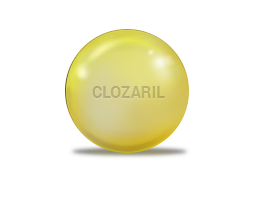
Astelin belongs to antihistamines which purpose is to block histamines in the human organism. It’s a spray that deletes nasal congestion, itching, and sneezing. The medicine is effective in case of infection, inflammation, and allergic reaction which result in itching, stuffy, and runny nose. Medics usually prescribe it for adults and children above five (in case of seasonal allergy) and above twelve (in case of vasomotor rhinitis that constricts and dilates a vein, artery, or capillary in the nasal cavity).

Sinequan - antidepressant, which is taken as prescribed by the doctor in case of the following indications: depression, anxiety and sleep disturbance in neuroses, alcoholism, organic diseases of the central nervous system, psychoneurotic disorders with anxiety, depression, psychotic depression (including the involutionary, reactive depressive phase of manic-depressive Psychosis). In general therapeutic practice - duodenal ulcer, dumping syndrome, premenstrual syndrome, chronic pain in cancer patients, skin itching, chronic idiopathic urticaria.

Desyrel antidepressive medicine, a derivative of thiazolopyridine; renders thymoleptic, anxiolytic, sedative and myorelaxation action. It is prescribed for treatment of various forms of depression (endogenous, psychotic, neurotic, somatogenic) including with the expressed state anxiety.
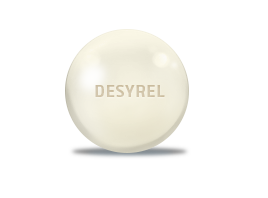
Augmentin - the Antibiotic of a broad spectrum of activity. It has bacterolytic (destroying bacteria) effect. It is active concerning a wide range of aerobic and anaerobic gram-positive and aerobic gramnegative microorganisms, including strains producing betalactamase. It is prescribed at diagnosing of bacterial infections caused by microorganisms, sensitive to drug: infections of upper respiratory tracts, bacterial infections of skin and soft tissues, infections of urogenital tract, sepsis, infection pelvic organs.
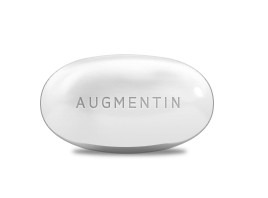
Erythromycin is a macrolide antibiotic of bacteriostatic action. In high concentrations and relatively high-sensitivity microorganisms may have a bactericidal effect.

Teramycin acts depressingly on pathogens of many diseases, as well as biomycin. It is less toxic and longer preserves its action in the body. The medicine is used for the treatment of anthrax, teileriosis, cholera and pasteurellosis and other diseases.
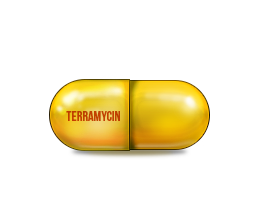
Isoptin is a calcium ion antagonist of the phenylalkylamine group. It improves myocardial perfusion, eliminates coronary spasm, reduces myocardial oxygen demand. It is used for diseases of the cardiovascular system.

Silagra tablets do a highly effective job of relaxing the musculature in the phallus. The drug increases the movement of blood in caverns of the erectile tissue by vasodilatory activity. It belongs to the category of medicines distributed as PDE5 blockers. Similarly to Viagra, these pills contain sildenafil citrate – a substance that mainly finds use as a cure for erectile disorders. Silagra mainly interacts with the circulatory function and requires an adequate sexual stimulation to set in action. Its effect can be felt in 30-40 minutes, resulting in about 4 hours of strong erection.
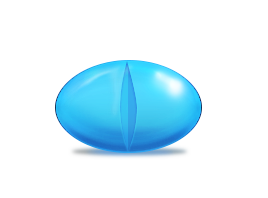
Cialis Soft Tabs differs from a usual tablet of Cialis in the fact that its action comes quicker. Cialis Soft is chewed and dissolved under a tongue that allows to reach a required effect in 10-15 minutes. Important!!! Cialis Soft is compatible to alcohol and greasy food!

Levitra Soft - convenient chewable tablets, also act as their famous analogue - Brand Levitra, but cost several times cheaper. This form of generic tablet has a pleasant taste, it does not need to be taken with water. The effect occurs maximum in 15 minutes after taking the drug and lasts about 12 hours. The tablet can be combined with alcohol and fatty foods. The number of side effects is minimal and they are manifested only in cases of an overdose.
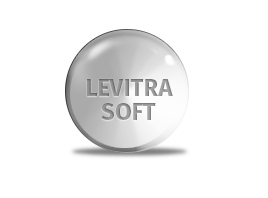
Gastroprotective agent, a synthetic analog of PgE1 boosts the formation of defensive slime and bicarbonate; enhances blood flow in the mucosa. It stimulates the healing of erosions, gastric and duodenal ulcers and is able to prevent their formation in some cases. It has a direct impact on the parietal cells of the abdomen, inhibits the lowest, and stimulated (by meal,pentagastrin, histamine) excretion of HCl. he drug diminishes the basal production of pepsin. The expected result occurs after 30 minutes and lasts at least 3-6 hours.
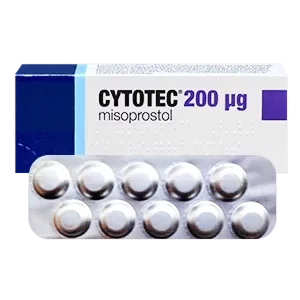
Trecator SC - an anti-TB drug (antituberculous), contains Ethionamide as a basic substance, the drug is prescribed for the treatment of multidrug-resistant type of tuberculosis, with the mycobacterium tuberculosis susceptible to it.

Naltrexone - complex treatment of alcohol dependence. It is also attributed to the prevention of the pharmacological effects of exogenous opioids and the maintenance of a non-opioid state in patients with opioid dependence.
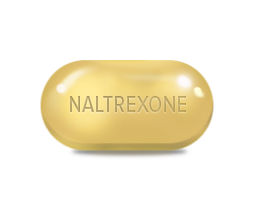
Aricept, which is donepezil - is prescribed at dementia which occured due to Alzheimer disease (mild and moderate severity) at adults, including elderly people (symptomatic treatment). Medicine works through inhibition in acetylcholinesterase of brain.
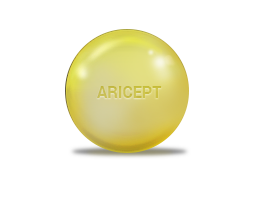
The local application of Rogaine 2 has a stimulating effect on hair growth in men and women with androgenetic alopecia. In clinical studies, it is reported that Regain stimulates hair growth and stops it falling out in cases when it begins to fall from the top (men) or in the middle part (women). The stimulation of hair growth begins approximately 4 months after using the product. After the withdrawal of the drug, the growth of new hair stops. In patients with normal or high blood pressure, a local use of the medicine was not accompanied by common side effects.
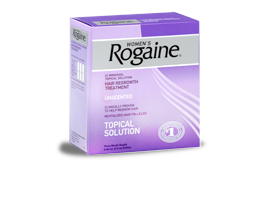
Dutas is a mix of two medicines: dutasteride and tamsulosin hydrochloride. The drugs have complementary mechanisms of action, due to which there is a rapid weakening of urination. It reduces the risk of retention of the urine. It is not anticipated that the pharmacodynamic reactions of a fixed dosage mix of dutasteride-tamsulosin differ from those obtained with the simultaneous use of dutasteride and tamsulosin as separate elements. Dutasteride inhibits the activity of both the 1st and 2nd type of isoenzymes. DHT is an androgen that is responsible for prostate and the increase of BPH. It inhibits the activity of adrenoreceptors.
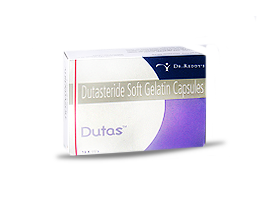
Vasotec- an antihypertensive drug based on the action of the active ingredient Enalapril, whose mechanism of action is associated with inhibition of the activity of the angiotensin-converting enzyme, leading to a decrease in the formation of the vasoconstrictor factor - angiotensin II and simultaneously to the activation of the formation of kinin and prostacyclin possessing a vasodilating action.
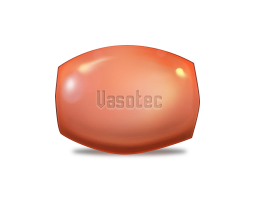
Benemid - an anti-gout agent. It prevents formation of uric acid. It is used for treatment of symptomatic hyperuricemia (gouty arthritis) at patients who cannot take other medicine decrease hyperuricemia.
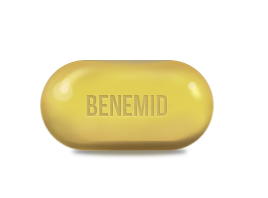
Mobic is a nonsteroidal anti-inflammatory drug, which has anti-inflammatory, antipyretic, analgesic effect. It belongs to the class of oxicams; derived from the anoliefo acid. Used in symptomatic treatment of osteoarthritis, rheumatoid arthritis, ankylosing spondylitis (Bekhterev's disease) and other inflammatory and degenerative diseases, accompanied by pain syndrome.
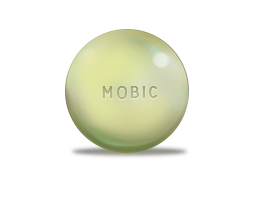
DDAVP® Nasal Spray (desmopressin acetate) is a synthetic analogue of the natural pituitary hormone 8-arginine vasopressin (ADH), an antidiuretic hormone affecting renal water conservation.
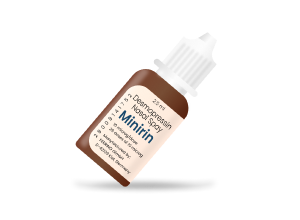
Alprostadil is a medicine used to treat the symptoms of Erectile Dysfunction (impotence).

Acticin (permethrin) Cream 5% is a topical scabicidal agent for the treatment of infestation with Sarcoptes scabiei (scabies). It is available in an off- white, vanishing cream base. Acticin (permethrin) Cream is for topical use only.
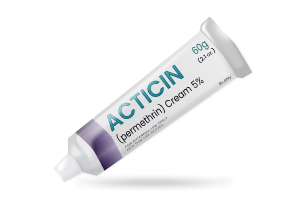
Sildamax working with the phosphodiesterase type5 inhibitor. which happening a quicker and more grounded blood flow. That move through the guy’s genital region abandoning him with a harder erection. Sildamax tablets might be a medicine that’s alleged to be take. It’s a generic medication provides you with Associate during a Nursing erection.
